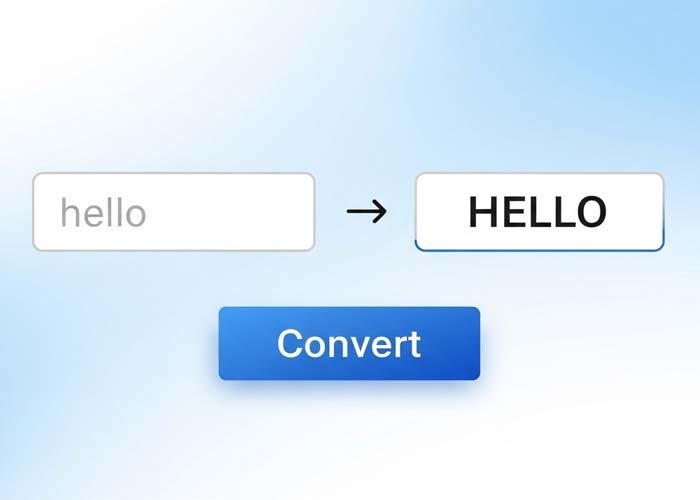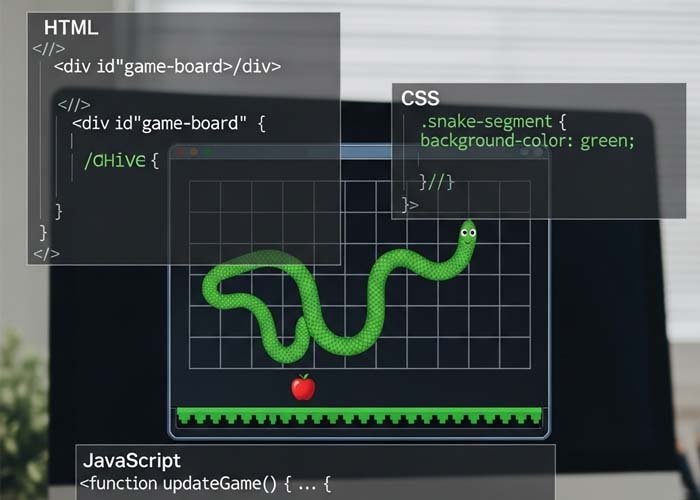Hacker Style Button with System Override Tooltip – Pure HTML and CSS
If you’re aiming for a techy, futuristic vibe on your website, this hacker-style button design is the perfect fit. It brings together a terminal-inspired aesthetic, flickering effects, and an interactive tooltip — all created with just HTML and CSS.
This setup features a single centered button labeled “SYSTEM.” When you hover over it, a tooltip with the words “SYSTEM OVERRIDE” appears above the button, styled with glowing borders, glitch animations, and a terminal-style prompt. Let’s walk through how the design works and what gives it that sleek, hacker-like feel.
Layout and Visual Style
The button sits in the middle of a dark, matrix-like background. The page uses a dark linear gradient with subtle green-tinted lines running across it, giving the impression of a data stream. This animated background runs continuously, adding depth and movement to the layout.
The main font used is a monospaced typeface, giving it the feel of a coding interface. This font choice, combined with color themes like indigo, green, and electric blue, reinforces the “terminal” look often associated with hacking interfaces in sci-fi movies.
Button Animation and Interaction
The button labeled “SYSTEM” has several layers of effects:
Hover Animation: When the user hovers over it, the button emits a stronger glow and slightly enlarges, creating a pulsing, high-tech effect.
Swipe Line: A thin light sweeps across the button continuously, resembling a terminal screen refresh. This animation speeds up when the button is hovered over.
Cursor Effect: A blinking underscore appears at the edge of the button, mimicking a command line prompt waiting for input. This small detail adds authenticity to the hacker-style design.
Tooltip Reveal
The most striking feature is the tooltip that appears above the button. It contains the phrase “SYSTEM OVERRIDE” and includes a number of visual effects:
Slide and Fade-In: The tooltip starts hidden and becomes visible when the user hovers over the button. It smoothly transitions upward and becomes more opaque.
Glitch Overlay: A copy of the tooltip text animates underneath the original with a green tint and lower opacity. This simulates a glitching or typing effect.
Subtle Glow Border: A glowing outline pulses around the tooltip, giving it a digital screen-like appearance.
Prompt Symbol: To the side of the tooltip, a small green symbol (
$>) flickers like a blinking terminal prompt, reinforcing the coding theme.
All of this is done with CSS animations, transforms, and pseudo-elements. No JavaScript is needed, making the effect lightweight and smooth on all browsers that support CSS keyframes.
Background Animation
Behind the button, the page background includes horizontal grid lines that move slowly upward. This detail is achieved through a repeating gradient and a vertical animation loop, giving the impression of scrolling data or code lines. It sets the tone and makes the environment feel more alive and immersive.
Why This Design Stands Out
This kind of interactive button layout is perfect for sites or sections related to cybersecurity, gaming, code-based tutorials, or themed landing pages. It grabs attention with visual effects, responds to user interaction, and builds a narrative through design. The tooltip effect adds extra style and functionality — it’s more than just decoration; it enhances the concept of control and command.
It’s also built entirely with CSS and HTML, which means faster load times and simpler integration. Every hover state, flicker, glow, and glitch is carefully styled to maintain a consistent aesthetic throughout the interface.
Final Thoughts
This hacker-style interface design showcases how far you can go with creative CSS. From the glitching tooltip to the animated background, every detail contributes to an immersive experience. If you’re building a site that needs a tech-savvy, futuristic look, this button-and-tooltip combination offers a great way to stand out and create a strong first impression.
You can see the full design and play with it using the live preview above. Feel free to tweak the colors, text, or animations to make it your own.
If you want variations — such as adding sound on click, turning the tooltip into a modal window, or integrating it into a command-line-style form — I can help you build that too.
This code uses HTML and CSS only — no JavaScript included.
Copyright – 2025 chase2k25 (cha-se)
Permission is freely granted to anyone who obtains a copy of this software and its accompanying documentation files (referred to as “the Software”), allowing them to use, copy, modify, merge, publish, distribute, sublicense, and even sell copies of the Software. Additionally, users are allowed to permit others to use the Software under these same terms.
It is required that the above copyright notices and this permission notice be included in all versions or significant portions of the Software.
Please note, the Software is provided “as is”, without any form of warranty—express or implied. This includes, but is not limited to, warranties of merchantability, fitness for a specific purpose, or non-infringement. Under no circumstances shall the original authors or rights holders be held responsible for any claims, damages, or other liabilities that may arise from the use of the Software, whether through legal action, negligence, or otherwise.
All code on Freeofcosts.com is reviewed before publishing. Each post includes a live code editor with real-time preview, so you can experiment and learn by doing. Most code is open-source and free to use or modify under respective licenses.



